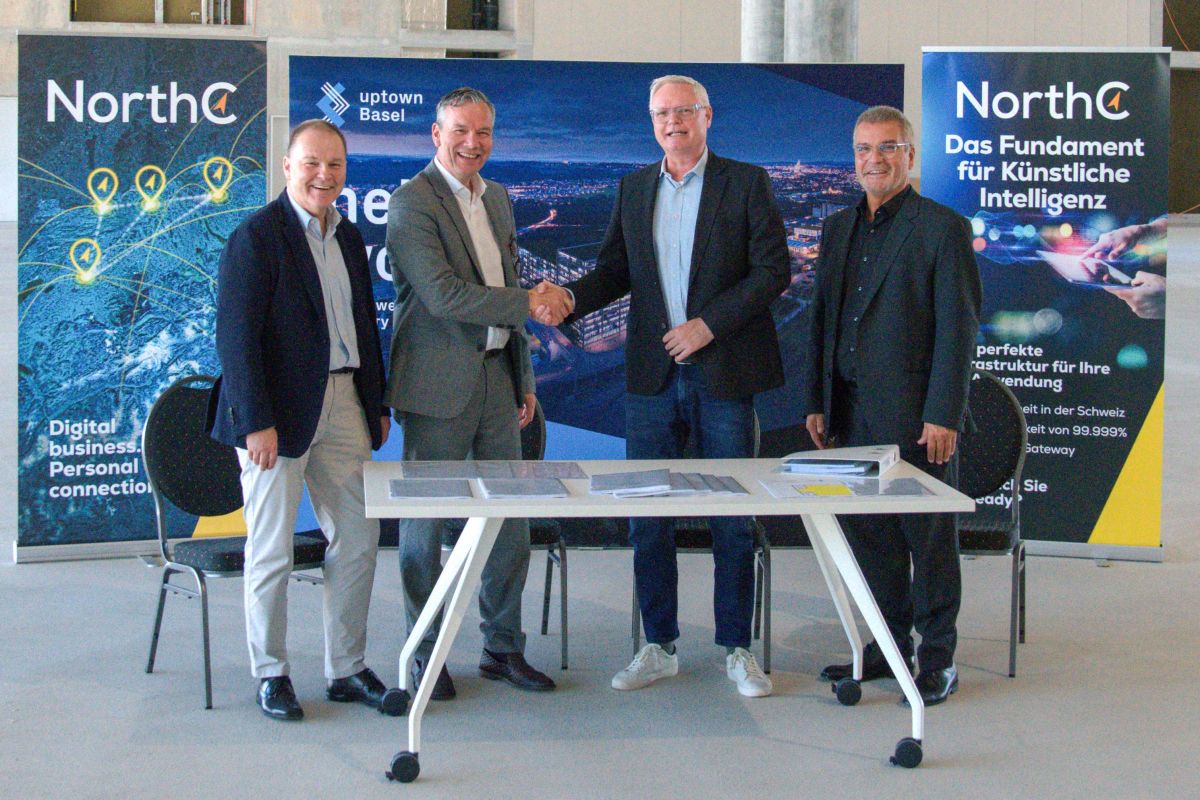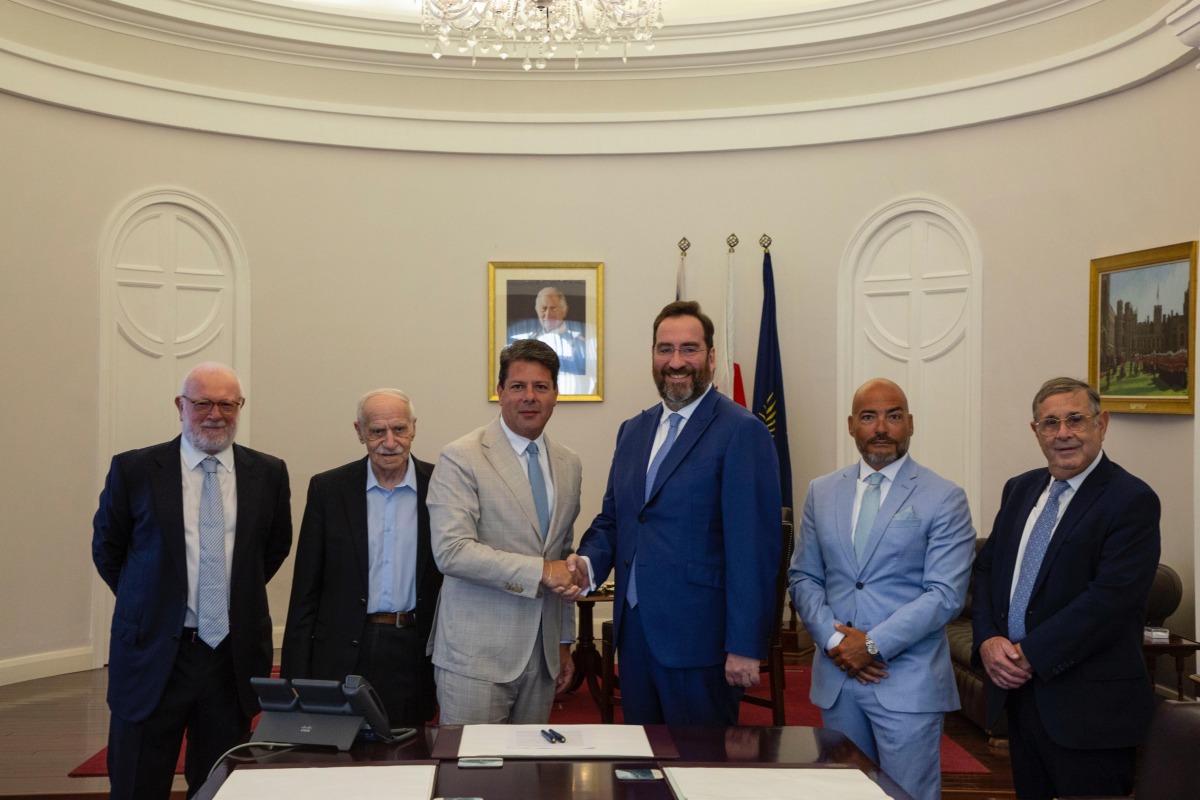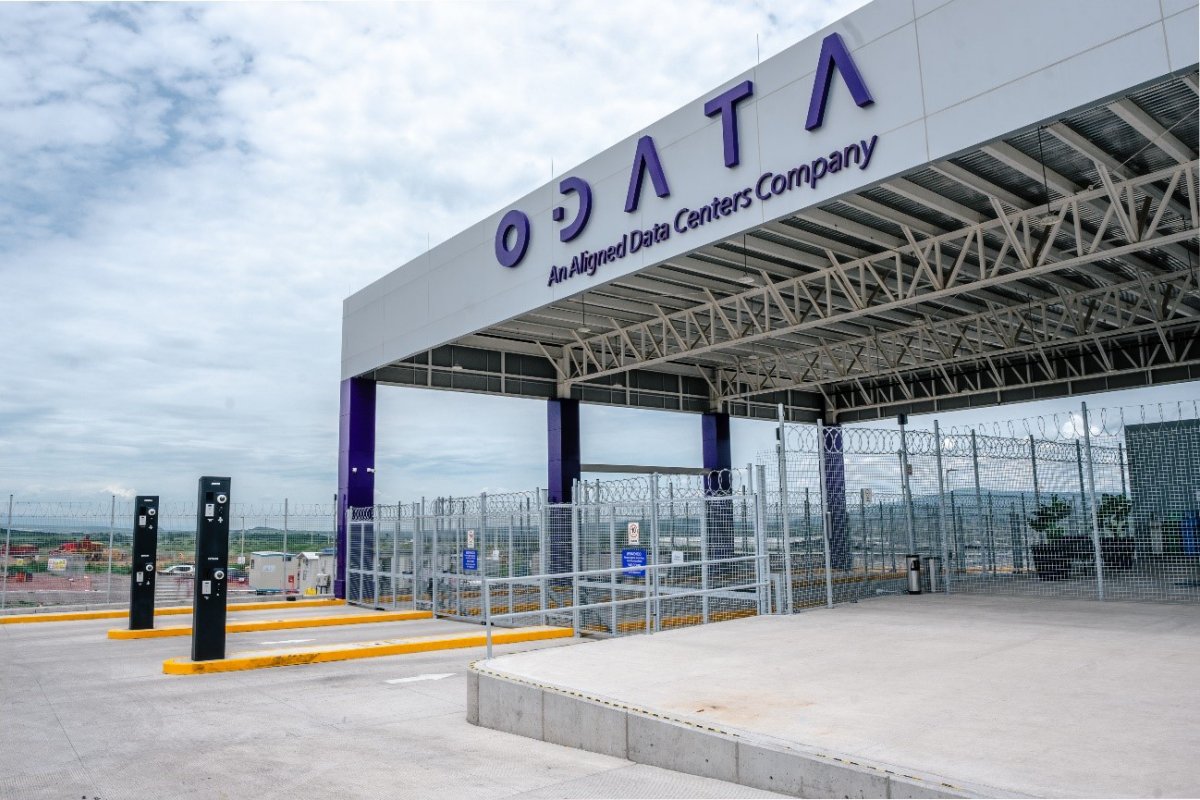Data Centre Projects: Infrastructure Builds, Innovations & Updates
Data Centre Build News & Insights
Data Centre Projects: Infrastructure Builds, Innovations & Updates
News
NorthC to build new data centre at uptownBasel campus
NorthC, a Dutch provider of sustainable data centre and colocation services, has signed an agreement to develop a regional data centre at the uptownBasel Innovation Campus in Arlesheim, Switzerland.
The project expands NorthC’s existing collaboration with uptownBasel and will deliver a facility designed to support advanced technologies such as artificial intelligence, quantum computing, diagnostics, and personalised medicine.
Construction is scheduled to begin around 18 months after planning approval, with operations expected to start by mid-2027.
Sustainable design and regional focus
In its first phase, the facility will cover 2,500 m² and provide 6 MVA of power capacity. It will be powered entirely by renewable energy, with backup systems running on green diesel, part of NorthC’s goal to achieve climate neutrality by 2030.
The centre will also incorporate waste heat reuse for residential heating.
Hans-Jörg Fankhauser, founder of uptownBasel, says, “With NorthC, we have a partner that shares our vision, one that understands the potential of operating a data centre on a globally recognised innovation campus.”
Fankhauser adds that uptownBasel aims to be “a platform for leading networks in medical technology, quantum computing, artificial intelligence, and the future of work. We aim to attract startups and talent to Arlesheim early on in their journey.”
NorthC already operates two facilities in nearby Münchenstein and says the new site will strengthen its role as an infrastructure provider for MedTech, Industry 4.0, and AI in the Basel region. With this development, the company will operate five data centres in Switzerland.
Alexandra Schless, CEO of NorthC Group, comments, “We are very pleased to deepen our partnership with uptownBasel. The construction of this data centre underscores our continued commitment to Switzerland as a strategic location and reflects our belief in innovation and the future.”
For more from NorthC, click here.
Joe Peck - 11 September 2025
Commercial Real Estate: Property Developments, Trends & Infrastructure
Data Centre Build News & Insights
Data Centre Business News and Industry Trends
Data Centre Projects: Infrastructure Builds, Innovations & Updates
News
Zoho to open new UK data centre
Zoho, a provider of cloud-based business software and productivity tools, has announced it will open a new UK data centre in the first quarter of 2026. The announcement comes alongside 43% growth in the UK and a tripling of staff numbers over the past two years.
The new facility will allow customers to retain data within the UK, addressing demand for greater data sovereignty, particularly in sectors such as financial services and the public sector. The company will also relocate its UK office from Bletchley to Milton Keynes in the same quarter to support further team expansion.
Strengthening UK operations and compliance
Zoho’s UK strategy is built around its Transnational Localism programme, which provides local teams to support customer needs and contribute to self-reliant regional economies. The latest growth expands its customer-facing staff across sales, support, and marketing.
Sachin Agrawal, UK Managing Director of Zoho, says, "In a constantly moving landscape impacted by geopolitical tensions and economic instability we are focusing deeply on enhancing the customer experience we provide to our UK customer base.
"We understand the shift to customers wanting to host their data within the boundaries of the UK, which is particularly important in industries such as the public sector and financial services. Data privacy and protection continue to be at the core of our operations and is enhanced further with our new data centre.
"Investment in our new office space enables us to continue to strengthen our growing team, ensuring that we not only deliver the best software, but the best service and support from those with excellent local knowledge of the market."
At its Zoholics Birmingham event, Zoho also confirmed new compliance features for UK customers. Zoho Books is now recognised by HMRC for Making Tax Digital (MTD) for Income Tax Self Assessment (ITSA), adding to its existing approval for VAT. From April 2026, this regulation will apply to sole traders with qualifying income above £50,000 and from April 2027 to those above £30,000.
Joe Peck - 8 September 2025
Data Centre Architecture Insights & Best Practices
Data Centre Build News & Insights
Data Centre Projects: Infrastructure Builds, Innovations & Updates
News
Pelagos planning ambitious 250MW facility in Gibraltar
Pelagos Data Centres, a developer of large-scale data centre infrastructure, has announced plans to build a major new data centre near the Port of Gibraltar, with capacity of up to 250MW by 2033.
Unveiled at a launch event at the offices of Gibraltar’s Chief Minister, Fabian Picardo, the project represents an investment of around £1.8 billion. It is the largest development currently planned in the territory by value, and among the largest in its history.
The facility will be built in five phases on a 20,000m² site. The first stage is scheduled to be operational in late 2027, with later phases delivered at intervals of around 18 months.
Transforming Gibraltar’s digital landscape
Funded entirely by private investment and backed by the Government of Gibraltar, the project is positioned as a step forward for the territory’s digital and economic development. It is intended to help meet Europe’s growing demand for data centre capacity, particularly as AI adoption accelerates across industries.
The site will operate independently of Gibraltar’s existing power grid and include a public leisure facility as part of the development.
Konstantin Sokolov, Chairman of Pelagos Data Centres, comments, "The scale of this project marks a new chapter for Gibraltar and for Europe's digital capabilities.
"Just as electricity and the internet transformed society in the past, AI is now emerging as the defining technology of our time with the power to redefine entire industries, economies, and communities.
"With our new facility, Pelagos Data Centres is laying the foundation for the next era of AI-driven innovation, positioning Gibraltar as a strategic hub and enabling Europe's brightest minds to unlock the full potential of this revolutionary technology."
Chief Minister Fabian Picardo adds, "I am delighted that Pelagos Data Centres have decided that Gibraltar is the place to establish their first facility and that the whole community will benefit from their massive investment and its huge economic impact.
"I look forward to this project becoming a reality as soon as possible."
Jobs, efficiency, and sustainability
The development is expected to create up to 500 jobs during construction and around 100 permanent positions once operational. Pelagos currently employs 50 full-time staff across London and Gibraltar, and plans to expand its local workforce significantly.
The facility will be built to Tier III standards, carrier-neutral, and designed to serve both public and private sector clients. It will pursue international certifications covering information security, quality, sustainability, and energy management, with a targeted Power Usage Effectiveness (PUE) of 1.2 or better.
The project’s sustainability strategy includes powering operations with a combination of renewable energy and liquefied natural gas (LNG), with the aim of achieving net-zero operational emissions by 2030.
Cooling systems will be designed to minimise water use, and the company is exploring heat recovery options to support community projects.
Sir Joe Bossano, Minister for Economic Development and Inward Investment, says, "This is the most significant infrastructure investment in Gibraltar since the early 1990s, when the GSLP Government brought state-of-the-art telecommunications as inward investment from the United States and made possible the creation of a centre for online services. Then, we future-proofed Gibraltar's economy. Today, we are doing so again.
"The technology of the future - on which every advanced economy will depend - will be artificial intelligence. AI requires data, processing power, and energy resources on a scale never before seen.
"The Ministry for Economic Development will put all its resources at the service of this initiative to ensure that it is delivered in the shortest possible time. In this field, speed of delivery is everything. Gibraltar should be the fastest jurisdiction on the planet when it comes to delivery."
A further technical briefing and press conference is planned for the first quarter of 2026, ahead of construction beginning later that year.
Joe Peck - 5 September 2025
Data Centre Build News & Insights
Data Centre Business News and Industry Trends
Data Centre Projects: Infrastructure Builds, Innovations & Updates
Insights into Data Centre Investment & Market Growth
ODATA secures $1.02bn green financing for data centres
ODATA, a Latin American data centre provider and part of Aligned Data Centers, has secured $1.02 billion (£757 million) in green financing to support sustainable data centre infrastructure across Latin America.
It is the largest financing of its kind in the region’s data centre sector, bringing ODATA’s total funding to $2.25 billion (£1.67 billion).
The financing will be directed towards projects that meet sustainability benchmarks, including renewable energy use, improved efficiency, and responsible construction practices.
Supporting sustainable growth in Latin America
"This historic achievement, representing the largest issuance of sustainable data centre financing in Latin America, has allowed ODATA to build a solid financial structure," says Rafael Bomeny, CFO of ODATA. "With these high-quality resources, we're incredibly well-positioned to empower our customers in their digital infrastructure expansion across the region.
"This green financing also reinforces our mission to contribute to Latin America's sustainable development by leading the way in adopting innovative technologies that drive a more efficient future for our customers and communities."
Funding has been provided by a syndicate of international banks, including Apterra, BNP Paribas, Crédit Agricole CIB, Deutsche Bank, MUFG Bank, Natixis, Nomura, Société Générale, and SMBC.
The new investment will support projects in Brazil, Mexico, Chile, and Colombia, strengthening ODATA’s position in the regional market and enabling cloud and AI infrastructure growth.
Innovation and energy strategy
"Sustainability is a top priority for ODATA," Rafael continues. "In addition to major investments in renewable energy, we adopt designs that seek the highest levels of energy efficiency without wasting water.
"With this new green financing, we can continue contributing to the development of Latin America’s digital infrastructure while upholding the highest standards of sustainability."
ODATA is the first hyperscale data centre operator in Latin America to self-produce 100% renewable energy in Brazil.
The company has also introduced the Delta Cube (Delta³) air-cooling system, developed by Aligned Data Centers, which supports high-density power loads of up to 50kW per rack and can integrate with liquid cooling technologies.
For more from ODATA, click here.
Joe Peck - 5 September 2025
Commercial Real Estate: Property Developments, Trends & Infrastructure
Data Centre Build News & Insights
Data Centre Business News and Industry Trends
Data Centre Projects: Infrastructure Builds, Innovations & Updates
8x8 opens new data centre in France
Cloud communications provider 8x8 has opened a new data centre in France to meet growing demand for in-country data hosting and regulatory compliance.
The facility is designed to support France’s data sovereignty and residency requirements, including GDPR and local hosting mandates. It also seeks to provide low-latency access and enterprise-grade reliability for businesses and public sector organisations.
Expansion in the French market
The announcement follows a year of growth for 8x8 in France. The company appointed Christian Laloy as Country Lead, strengthened its collaboration with IT services group SCC, and formed a partnership with the French trade association for customer relations (AFRC).
“While others choose to operate remotely, we’re investing locally,” says Christian Laloy, Country Manager, France at 8x8. “Some providers choose not to locate in France and, in my mind, that shows a lack of respect for the local businesses, the local people, and the culture.
"This new data centre makes our position clear: 8x8 is committed to serving French organisations with secure and fully compliant technology and transparency.”
Supporting regulated industries
The new site is part of 8x8’s wider strategy to serve regulated and security-conscious sectors. By storing data in-country and complying with European requirements, the company aims to increase trust amongst French customers.
“8x8 isn't just entering the market with an innovative approach; by locating its data centres in France, the company helps deliver its customers a high level of data sovereignty, in line with European regulatory requirements,” claims Regis Davesne, Director of SCC France.
“This choice significantly boosts confidence and makes a real difference for customers looking for a solid, reliable long-term partner.”
The French opening is one of several European investments planned for 2025 as 8x8 expands across markets where compliance and security are key considerations.
Joe Peck - 3 September 2025
Data Centre Architecture Insights & Best Practices
Data Centre Build News & Insights
Data Centre Projects: Infrastructure Builds, Innovations & Updates
News
Yondr to build 550MW Dallas campus
Yondr Group, a global developer, owner, and operator of hyperscale data centres, has secured a 163-acre site just south of Dallas in Lancaster, Texas, USA, to develop a campus with the capacity to accommodate 550MW critical IT load. The project is situated in one of the nation’s most sought-after data centre corridors.
The acquisition is Yondr’s first announced expansion under its newly appointed CEO, Aaron Wangenheim. The Dallas site joins Yondr’s growing North American footprint, which includes two data centres totalling 96MW in Northern Virginia and a 27MW data centre in Toronto, Canada.
The company is reportedly also in advanced discussions for sites in several other tier one US metros, and continues to expand in Europe, where the company has existing assets in London, Frankfurt, and Amsterdam.
“The US is a key market for Yondr’s next phase of growth and Dallas is one of the largest and fastest-growing data centre markets in the world. This investment in Dallas is just the beginning,” says Aaron Wangenheim, CEO of Yondr.
“Our proven ability to deliver reliable, resilient, and sustainable data centre solutions at scale – backed by the strength of our investors DigitalBridge and La Caisse – positions us incredibly well to support clients in tier one markets where they need us.”
In addition to job creation, the project should generate large tax revenue for the region and open opportunities for local suppliers and contractors throughout construction and operations.
Mayor Clyde Hairston of the City of Lancaster comments, "We are delighted to welcome Yondr, a respected data centre developer and operator, to Lancaster. Yondr has pledged to create full-time jobs as a result of this project and [to] provide significant financial support for local events and community initiatives.
“As Lancaster continues to rise as a shining star of Texas, Yondr’s investment further solidifies our city’s place on the map as a hub for innovation, infrastructure, and opportunity. We look forward to seeing their campus take shape and their impact flourish within our community."
The campus is expected to break ground in 2026.
For more from Yondr Group, click here.
Joe Peck - 20 August 2025
Data Centre Build News & Insights
Data Centre Business News and Industry Trends
Data Centre Projects: Infrastructure Builds, Innovations & Updates
Insights into Data Centre Investment & Market Growth
AirTrunk secures S$2.25bn green loan for Singapore DC
Hyperscale data centre specialist AirTrunk has secured a S$2.25 billion (£1.3 billion) green loan in Singapore to finance its new hyperscale data centre, SGP2. The deal is Singapore’s largest-ever loan (and green loan) for a data centre project.
The transaction supports the development of sustainable digital infrastructure and reinforces Singapore’s position as a major green finance hub in Asia. The loan aligns with the Technical Screening Criteria of the Singapore-Asia Taxonomy for Sustainable Finance, as well as AirTrunk’s Green Financing Framework.
Largest green loan for a data centre in Singapore
Crédit Agricole CIB, DBS Bank, and ING Bank acted as global coordinators and sustainability structuring agents for the financing, working alongside a consortium of 23 other financial institutions.
MUFG Bank, Natixis CIB, Standard Chartered Bank (Singapore), and United Overseas Bank were among the mandated lead arrangers.
The financing begins as a green loan, with the option to transition into a sustainability-linked loan (SLL). All financial incentives will be directed to AirTrunk’s social impact fund.
Robin Khuda, Founder and Chief Executive Officer at AirTrunk, comments, “This landmark transaction – Singapore’s largest loan and green loan for a data centre – strengthens AirTrunk’s leadership in sustainable finance and reflects strong market confidence in AirTrunk’s growth and sustainability strategy.
"This financing structure highlights the strength, depth, and international scale of Singapore’s financial ecosystem.”
AirTrunk’s SGP2 campus, located in Loyang, will provide more than 70MW of cloud and artificial intelligence compute capacity for Singapore and Southeast Asia.
The facility is designed to achieve a BCA Green Mark Platinum rating and a Power Usage Effectiveness (PUE) of 1.20, one of the lowest in Singapore. Green concrete and green steel are also being used in construction to cut embodied carbon.
For more from AirTrunk, click here.
Joe Peck - 18 August 2025
Data Centre Build News & Insights
Data Centre Projects: Infrastructure Builds, Innovations & Updates
Data Centres
News
ODATA opens fourth hyperscale DC in Mexico
ODATA, a Latin American data centre provider and part of Aligned Data Centers, has launched its QR04 hyperscale data centre near San Miguel de Allende in the Querétaro region.
The facility expands ODATA’s network in Mexico to four interconnected sites, designed to support the increasing demand for cloud computing and artificial intelligence services.
The interconnected model allows customers to operate across multiple locations with built-in redundancy, supporting reliable cloud and AI operations.
The company has focused on addressing one of Mexico’s key infrastructure challenges - namely consistent power supply - to strengthen its position in the country’s hyperscale market.
“With QR04, we reaffirm our investment in Mexico and our commitment to our global customers,” says Ricardo Alário, CEO of ODATA. “Our expanded regional presence provides a solid foundation for the sustained growth of cloud and artificial intelligence in the country as well as across Latin America.
"Just three months after inaugurating DC QR03, we’ve already begun expanding that facility and have launched DC QR04. Our continued investment across all our campuses demonstrates our commitment to staying ahead of the curve and anticipating the technological needs of the future.”
QR04 has a planned total IT capacity of 24MW, with the first 12MW now operational. It features Aligned Data Centers’ patented Delta Cube (Delta³) air-cooling system, designed to maximise thermal efficiency and support power densities of up to 50kW per rack using air cooling alone.
The system captures and removes heat at source rather than distributing cold air through the data hall, and can be integrated with liquid cooling for high-density AI, machine learning, and high-performance computing workloads.
The site also uses a closed-loop water cooling system, enabling continuous water reuse and minimising environmental impact whilst maintaining a low Water Usage Effectiveness (WUE).
The facility is already in service for hyperscale customers, reflecting growing demand for high-density data infrastructure in Mexico. Its construction has reportedly created more than 1,500 local jobs.
For more from ODATA, click here.
Joe Peck - 15 August 2025
Data Centre Build News & Insights
Data Centre Infrastructure News & Trends
Data Centre Projects: Infrastructure Builds, Innovations & Updates
Innovations in Data Center Power and Cooling Solutions
Joule, Caterpillar, Wheeler to power Utah DC
Joule Capital Partners, an infrastructure company, Caterpillar, a manufacturer of construction equipment, and Wheeler Machinery, a dealer of heavy construction equipment, have jointly announced an agreement to power Joule’s High Performance Compute Data Center Campus in Utah.
Joule says it aims to create the largest single campus in Utah.
Bringing multiple gigawatts of capacity to Utah
This initiative will provide four gigawatts of total energy to the centre of the Intermountain West.
The project will deliver prime power and integrated combined cooling heat and power (CCHP) systems with a by-design liquid cooling architecture.
Powered by a fleet of Caterpillar’s latest G3520K generator sets and support equipment, the distributed generation system produces electricity and captures waste heat to power and cool high-density server systems.
The provision includes 1.1 gigawatt hours of grid forming battery energy storage along with backup power generation served by diverse fuel sources.
Due to Caterpillar’s US-based manufacturing footprint, the full generation package should be able to be delivered ahead of other generation technologies. This speed-to-power advantage could be critical for meeting the growth in demand for compute capacity.
Beyond the gensets, this integrated system includes the controls, switchgear, inverters, energy storage, and CCHP, providing a total power provision for the Joule data centre.
Caterpillar and Wheeler will also provide service and support for the products and systems, aiming to ensure uptime and availability targets are met.
Comments
“This project represents the core of Joule’s mission: to deliver artificial-intelligence-(AI)-ready compute capacity by pairing world-class data centre campuses with reliable, on-demand power,” says David Gray, President of Joule Capital Partners.
“By combining Caterpillar’s advanced energy systems with Wheeler’s local expertise, we can bring gigawatt-scale capacity to market faster and more efficiently than ever before, ensuring our tenants have the power and reliability they need to thrive in the next generation of high-performance computing.”
Melissa Busen, Senior Vice President of Electric Power at Caterpillar, adds, “Caterpillar is uniquely positioned to tackle the growing energy needs for artificial intelligence and the evolving needs of modern infrastructure.
"This project is a perfect example of how we can deliver fast, reliable power generation to our customers through integrated energy solutions. We are proud to work with Joule and Wheeler to help bring this project to life.”
Bryan Campbell, CEO of Wheeler Machinery, claims, “This strategic alliance between Joule, Caterpillar, and Wheeler brings together world-class engineering, local expertise, and visionary energy design.
“We’re proud to help deliver a resilient solution ready to meet future compute demands and set a new standard for data centre infrastructure.”
Joe Peck - 8 August 2025
Data Centre Build News & Insights
Data Centre Projects: Infrastructure Builds, Innovations & Updates
Data Centres
News
Digital Connexion announces first DGX-ready Chennai data centre
Data centre operator Digital Connexion today announced that its MAA10 facility in Ambattur, Chennai, has been certified as part of the NVIDIA DGX-Ready Data Center program.
This certification reflects the facility’s capabilities to support accelerated computing workloads required for AI training and GPU-intensive computing.
The company says the MAA10 data centre is purpose-built to offer a resilient, GPU-optimised environment capable of supporting compute-intensive AI training and inference workloads.
In line with global operational standards, MAA10 is compliant with ASHRAE W2 thermal guidelines, which ensures stable and efficient cooling in environments with elevated heat loads.
The facility supports both air and liquid cooling configurations, enabling flexible deployment of diverse infrastructure from conventional GPU servers to high-density systems requiring advanced thermal management.
It also features a 'unique' N+2C power architecture, offering an added layer of redundancy that aims to enhance uptime and operational reliability.
“The ability to process and manage data at scale is foundational to successful AI deployments," says CR Srinivasan, Chief Executive Officer, Digital Connexion. "As AI adoption accelerates across India’s key industries, so does the need for infrastructure that can overcome data gravity barriers and support increasingly intensive AI workloads.
"Our certification as part of the NVIDIA DGX-Ready Data Center program strengthens MAA10’s position as a purpose-built, high-performance environment engineered to aggregate, process, and manage large volumes of AI data, empowering enterprises to innovate at scale.”
As Indian enterprises embed AI more deeply into their operations, the amount of data to be managed - and thus the need for reliable data centres - continues to grow.
As indicated by the Data Gravity Index Report 2.0, by the end of 2025, Delhi will have generated 12.3k exabytes of data, boosting the need for optimised data management.
MAA10 is TIA-942 Rated 3, which highlights the facility’s capability to maintain critical operations even during maintenance activities. The data centre also holds an IGBC Platinum rating, reflecting its alignment with high benchmarks in sustainability, energy efficiency, and responsible resource management.
Digital Connexion asserts that with "dedicated infrastructure engineered to handle dynamic GPU load patterns, MAA10 is positioned to support enterprises developing and deploying data-intensive AI applications in India."
Joe Peck - 5 August 2025

Head office & Accounts:
Suite 14, 6-8 Revenge Road, Lordswood
Kent ME5 8UD
T: +44 (0)1634 673163
F: +44 (0)1634 673173









